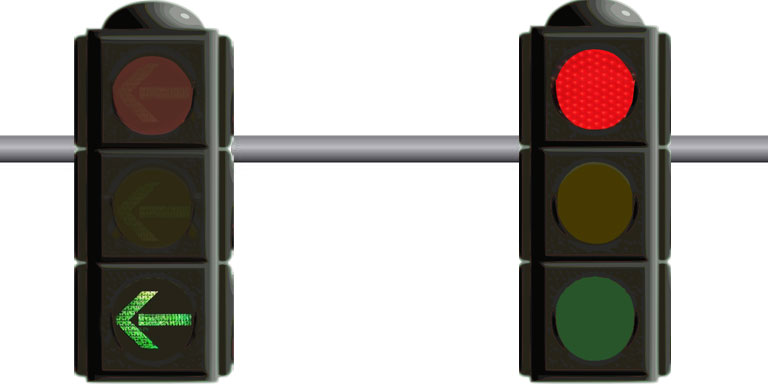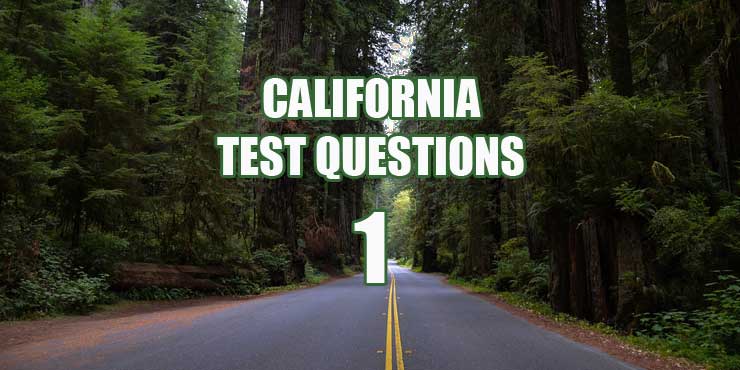A traffic light with a green arrow:
A. Gives you the right-of-way at all times
B. Warns you to proceed with caution
C. Allows you to make a protected turn
Which is the correct definition?
A. Right-of-way at All Times?
It is a common misunderstanding that the green arrow signal gives you an absolute right-of-way. Before turning, you must yield to any vehicle, bicyclist, or pedestrian still in the intersection. Be especially careful when pedestrians are crossing the street you are turning into. They may have started crossing with a WALK signal. It would be best to wait until they have safely crossed the road.
B. Warns You to Proceed with Caution?
Whenever you enter an intersection, you must use caution and look for vehicles and pedestrians who may cross your path. You should prepare to stop and yield if they are close enough to be a hazard.
A green signal is, however, not a warning signal.
A signal light that warns you to slow down, be alert before entering the intersection, and proceed with caution is yellow.
C. Allows You to Make a Protected Turn?
The purpose of the green arrow is to let you know that you must turn in the direction of the arrow if you are in the proper lane and the way is clear.
It is a protected turn since oncoming vehicles, bicyclists, and pedestrians are stopped by a red traffic signal light when the green arrow appears.
Note that not all traffic has a red light. Left-turning vehicles from the opposite direction may also have a green arrow. Make sure you make a tight turn and stay in your lane.
When a Vehicle from Opposite Direction Turns Right on Red
A prevalent cause of conflict and crash risk is when a vehicle from the opposite direction makes a right turn on red at the same time as a car turns left on a green arrow.
Who has the right-of-way, and who is at fault if it results in a collision?
You must know that the law doesn’t give anyone the right of way. The law only states who must yield.
The oncoming driver with a red light must stop and yield to all vehicles lawfully entering the intersection and may only make a lawful turn when the way is clear. California vehicle code indicates that the driver turning on red must yield to any vehicle that has approached or is approaching so closely as to constitute an immediate hazard to the driver and must continue to yield until the driver can proceed with reasonable safety [VC 21453]
If a vehicle makes a left turn from the opposite direction, a driver facing a red signal should not proceed against the red light.
The driver making a left turn must indicate the turn using turn signals. A driver not using turn signals will likely be at fault – or at least partly at fault.
The driver turning left with the green arrow signal should only proceed if the way is clear. If it is evident that a driver has started a right turn on red, the left-turning driver should stay in the lane and yield.
Follow the discussion with other scenarios at Driver’s Prep.
Courtesy and Common Sense
Courtesy and common sense at intersections will help reduce the risk of accidents. Never assume oncoming drivers will yield and give you the right-of-way. Whenever it helps to prevent an accident, let others go first.
Learn More
- What Does the Yellow Arrow Signal Mean?
- Can You Turn Against a Red Arrow?
- California Road Signs and Traffic Signals Test
- California Road Sign Quiz – 20 Road Signs You Must Know
<
Disclaimer: The article is for informational purposes only and not to provide legal advice.


